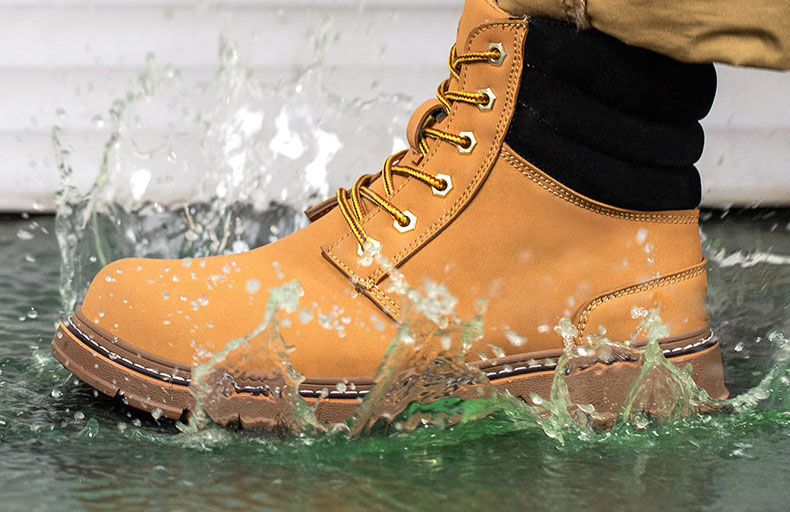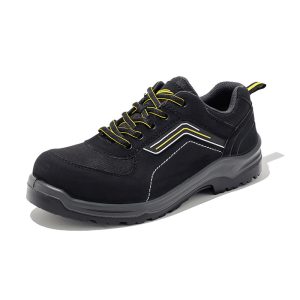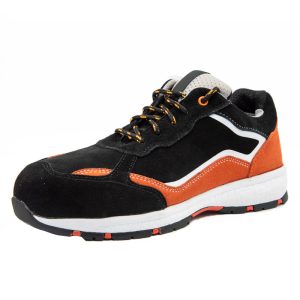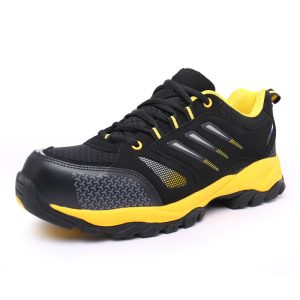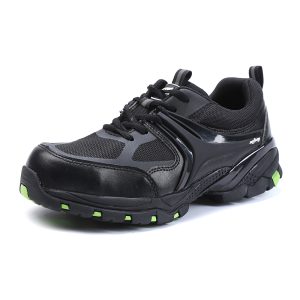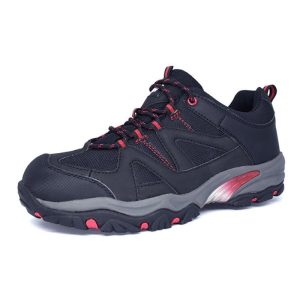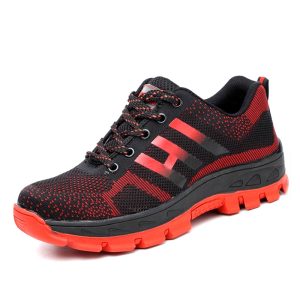The criteria for purchasing slip resistant shoes that must be mentioned
Anti-slip is one of the most important safety features in labour protection shoes. The soles of the shoes have good anti-slip and grip functions, and can effectively maintain body balance in water and oil environments. Poor anti-slip shoes are a safety hazard, and it is easy to slip and fall when walking, resulting in twisted feet and bruises, so we need a pair of anti-slip shoes. As a professional labour protection shoe manufacturer, we also receive many enquiries from customers about anti-slip safety shoes. A common concern is the standard of non-slip labour protection shoes.
In order to enable friends in need to handle the purchase of non-slip labour protection shoes more quickly, I have compiled a list of common non-slip labour protection shoe standards, which you can choose according to your own needs.
The factors that affect the friction of the sole are mainly the coefficient of friction on the surface of the sole, the contact area between the sole and the ground and the pressure exerted on the sole.
According to the new national standard GB21148-2020, for the anti-slip level of labour protection shoes, the coefficient of friction measured on the tiles is greater than 0.28 for the heel sliding forward and 0.32 for the horizontal sliding forward, which meets the requirements.
There is also a common anti-slip grade system standard – the EU standard, which is divided into three grades, namely SRA, SRB and SRC.
SRA level anti-slip shoes means that the soap solution test is chosen on glazed porcelain tiles, with the pressure between 400N-500N, which is almost 80-100 pounds, and the anti-slip coefficient is greater than 0.32 when the whole shoe is tested.
SRB level non-slip shoes are safety shoes tested on a stainless steel plate with glycerine, the pressure is also between 400N-500N and the slip resistance factor is greater than 0.18 when the whole shoe is tested.
SRC level anti-slip labour protection shoes, which need to pass the previous two tests in order to achieve, would be better anti-slip shoes.
The price of many slip resistant shoes is still very different, some slip resistant shoes are not cheaper than the sports and leisure shoes that we usually wear, so many people in the purchase of slip resistant shoes will also be many aspects of comparison, but there will still be many people will ask: slip resistant shoes choose what kind of suitable?
What parts of the shoes play a non-slip role?
All the “black technology” of anti-slip shoes is in the sole. The anti-slip factor is what makes a shoe slip resistant, and the material and pattern of the sole is what makes a shoe slip resistant. The material and pattern of the sole is also the place where the manufacturers of anti-slip shoes compete. Some non-slip soles are patented and made of special materials. This is for a higher slip resistance factor to cope with more complex ground conditions of oil, water or detergents.
Many people know that the main anti-slip function of anti-slip labour protection shoes are dependent on the material of the sole, in fact, the design of the sole pattern is also a factor that affects the anti-slip of labour protection shoes. In some environments where the ground is more humid or the ground is more oily, the requirement for the sole material of anti-slip labour protection shoes is to use a rubber sole and the sole pattern of the sole should be designed with a drainage groove.
When there is water between the sole and the contact surface, if the sole pattern cannot drain the water effectively to the groove of the sole pattern and the two sides of the sole, the water will exist between the sole and the ground, this thin layer of water plays a role of lubrication, which can reduce the friction between the sole and the ground, causing the phenomenon of slipping, therefore the design of the sole pattern should consider both the dry contact surface and the wet contact surface with water.
The sole material and pattern structure play a pivotal role in its anti-slip and non-slip function. The anti-slip labour protection shoes are also put a lot of effort in the design of the sole pattern, the anti-slip labour protection shoes have obvious sole pit pattern in the wet and watery ground, and the pit pattern can cut into the water on the ground and have a strong ability to grip the ground; in the dry ground, the sole has more planes and more contact surfaces, the anti-slip coefficient reaches the SRC level, and it is worn More peace of mind.
What kind of anti-slip shoes are suitable?
In addition to a wide range of styles to choose from, we also support customisation. The materials of the soles and uppers as well as the material of the insoles can be customised to meet the diversified needs of purchasing companies.
When choosing labour protection shoes, people should be aware of what the function of the shoes itself is.
Floors with oil, water or detergents are a common environment encountered by workers. According to the new national standard for safety shoes, GB21148-2020, there are specific numerical requirements for slip resistance. However, slip resistant shoes that meets the national standard may not be sufficient to cope with many oily and watery environments. If better slip resistance is required in oil and water environments, a higher slip resistance factor is required, usually to achieve the European Standard SRC level of slip resistance.
The waterproof shoes can be used to maintain how to continue to wear the next time, non-slip waterproof shoes after wearing, you need to rinse the surface of the oil stains with water, if there is water on it, you need to put the shoes in a ventilated and dry place to dry, so that the next time you wear it will not have problems, or else the shoes will not be how to wear because of improper storage bad.
The last anti-labor waterproof shoes slip-resistant shoes before wearing, to pay attention to the quality of labor insurance shoes, once the damage or cracks to deal with in a timely manner, can not just wear, you can contact the specialized labor insurance shoes after-sales understanding of the situation, to kill the risk in the cradle.
The waterproof shoes and slip resistant shoes are clear to everyone, we have to choose the better quality of this kind of shoes when we buy them, so it’s safer to wear them on your feet. At the same time, waterproof and non-slip are different functions, whether you need waterproof or non-slip alone, or you need to purchase both waterproof and non-slip labor protection shoes, the needs first clear.




